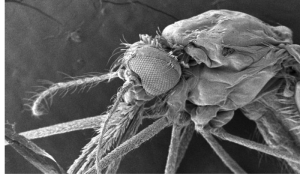
Introduction
Humans and insects have a difficult relationship. On one hand, the world’s sixlegged denizens are a fundamental part of the ecological balance, working to recycle waste products left by larger organisms. However, they can also be humanity’s bane, transmitting harmful pathogens to those on whom they feed. The mosquito is guiltier in this respect than most, harboring one of the world’s leading pathogens: the malarial parasite. The disease affects three to five hundred million victims a year worldwide, ultimately causing almost a million deaths3. Even with US health care resources, approximately 1300 American cases occurred in 2004, consisting primarily of travelers returning from tropical regions. Malaria is truly a global disease4.
However, while it is described as a singular disease, malaria can actually result from infection by any of four species of parasites of genus Plasmodium. Which parasitic strain is contracted determines the severity and symptoms of a patient’s reaction. Further, the varying geographic prevalence of each strain guides different anti-malarial strategies in, for example, Thailand versus Sub-Saharan Africa. In other words, the biology of malaria infection is not simply a matter of scientific nuance – they determine how health organizations decide to treat patients and what precautions they should take in the process. Similarly, the ways in which malarial parasites are transmitted between species is also vitally important to treatment efforts. Mosquitoes are thus necessarily key players in this story. However, before launching into these specifics, we’ll begin with the most important aspect of malaria for us: the disease as it exists in humans.
